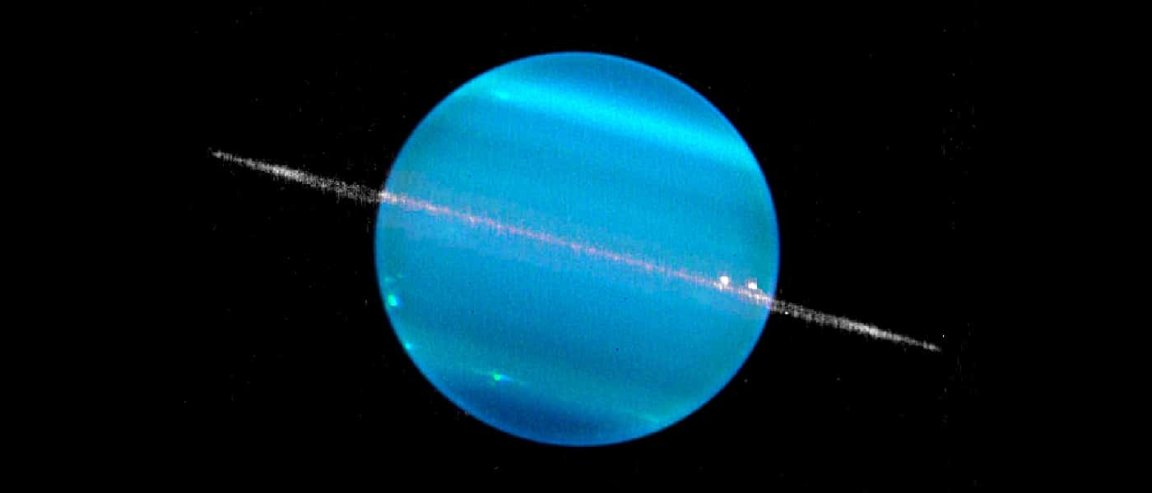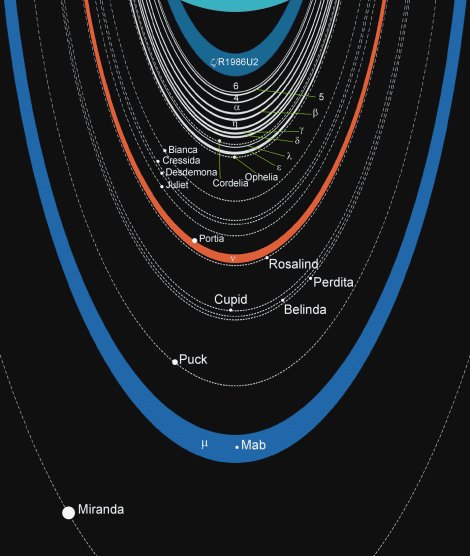
A Pair of Scientists Discover a Pair of Moons
Similar to other gas giants in our solar system, Uranus has multiple natural satellites. But a review of data gathered by the Voyager 2 spacecraft three decades ago has led two planetary scientists at the University of Idaho, Rob Chancia and Matthew Hedman, to believe that Uranus may be home to a pair of previously undiscovered moons.
These two moons seem to be orbiting closer to Uranus than any of its 27 other natural satellites, hiding within the fifth and sixth rings away from the planet, Alpha and Beta. Those rings are displaying a wavy pattern, and the previously unnoticed phenomenon suggests that the rings could possibly be being pulled at by two hidden moons.
The researchers speculate that these two moons weren’t previously noticed because they are so small and dark that they would likely have blended into the background. They believe that the moons (if they exist) likely have diameters of only 4 to 14 km (2 to 9 miles) and reflect hardly any light.

So Much Left To Learn
While far from confirmed, this possible discovery illustrates just how little we still know about our own solar system. Uranus may be the third largest planet in it, but it is nearly 20 times farther from the Sun than we are on Earth. That makes observing the planet very difficult.
The researchers’ next step is to publish their findings in a peer-reviewed journal and take a closer look at Uranus using the Hubble Space Telescope. Given that it has been 30 years since the Earth sent a mission to Uranus, this new moon discovery might generate more interest in the planet and perhaps we’ll even send a new space probe to this distant world sometime soon.